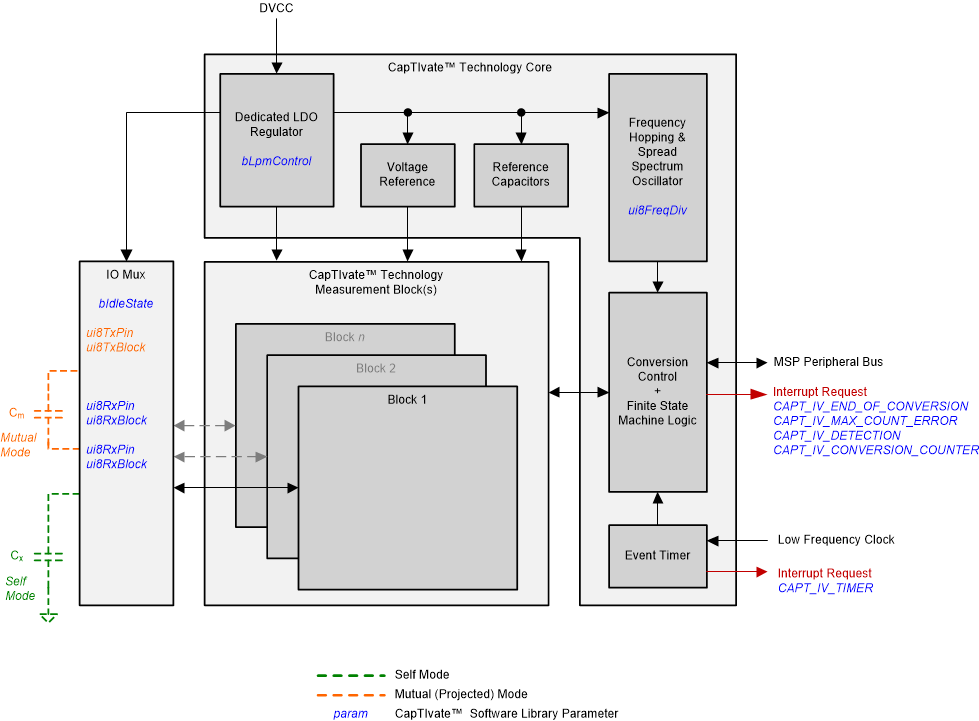TIDUE90 July 2018
- Description
- Resources
- Features
- Applications
- Design Images
- 1System Description
- 2System Overview
- 3Hardware, Software, Test Requirements, and Test Results
- 4Design Files
- 5Software Files
- 6Related Documentation
- 7About the Author
2.3.1 MSP430FR2633
The MSP430FR2633 is a 16-bit microcontroller with programmable ferroelectric memory (FRAM) and CapTIvate capacitive sensing technology. CapTIvate technology is a flexible and robust capacitive-sensing technology for user interface applications such as buttons, sliders, wheels, and proximity sensors. The CapTIvate technology in the MSP430FR2633 has several key features designed to ensure accurate touch detection in noisy environments. Figure 5 shows the high-level block diagram of the CapTIvate peripheral architecture.
 Figure 5. CapTIvate Peripheral Architecture
Figure 5. CapTIvate Peripheral Architecture